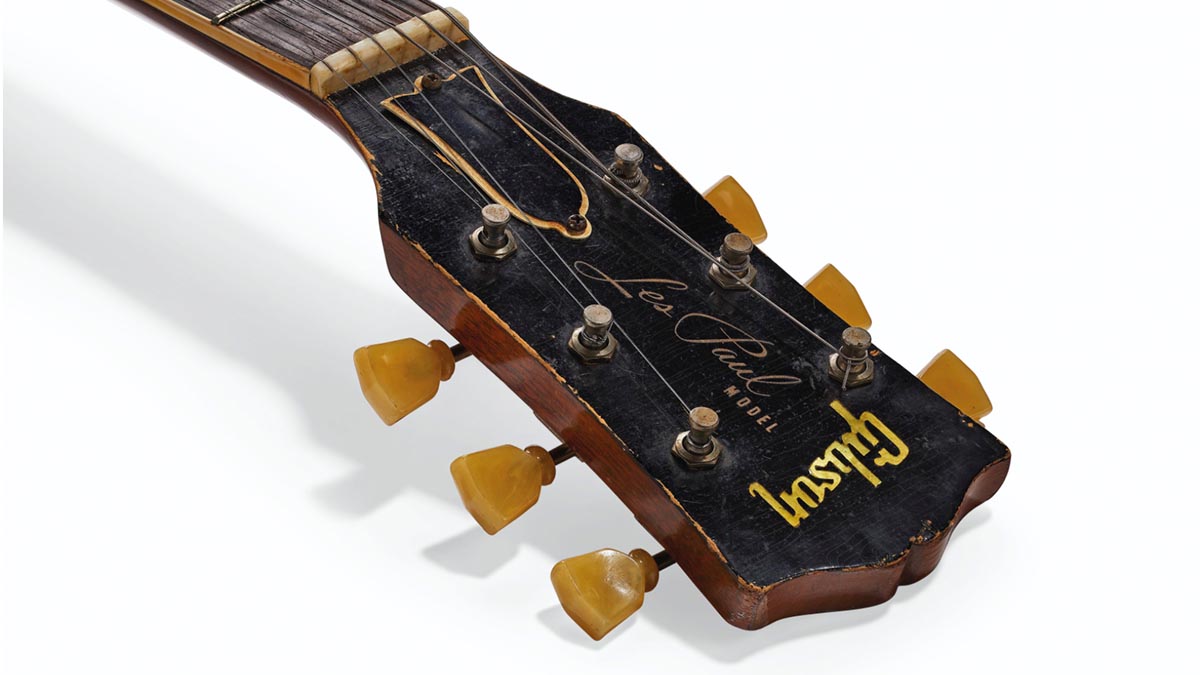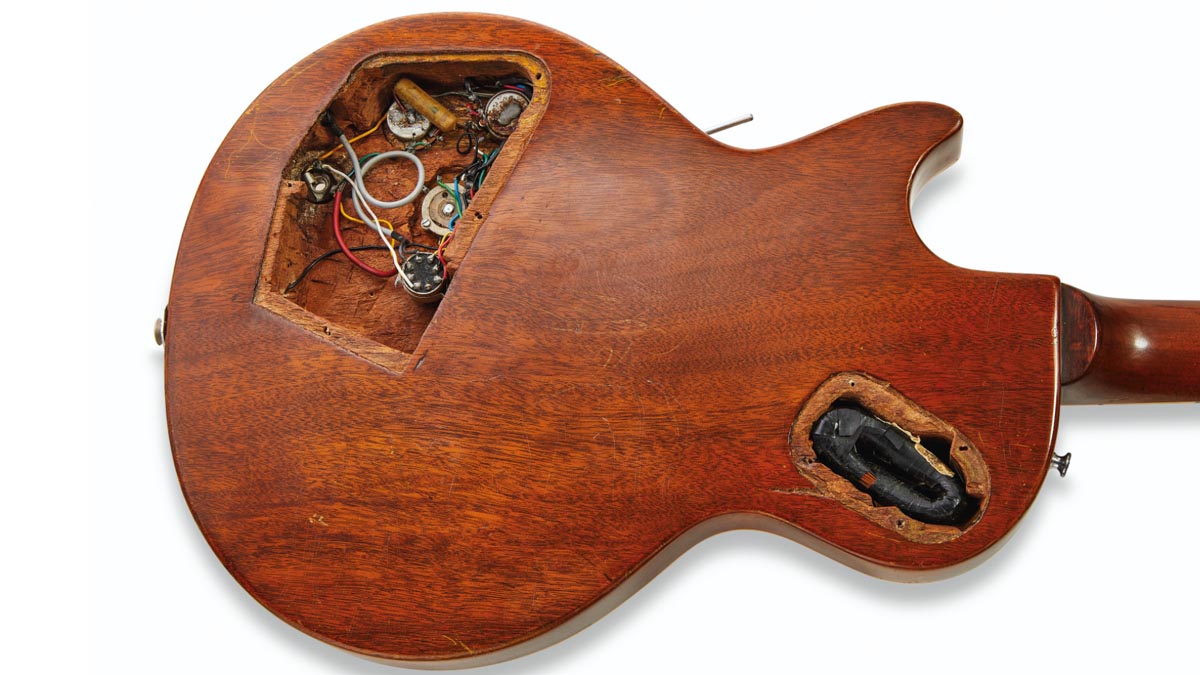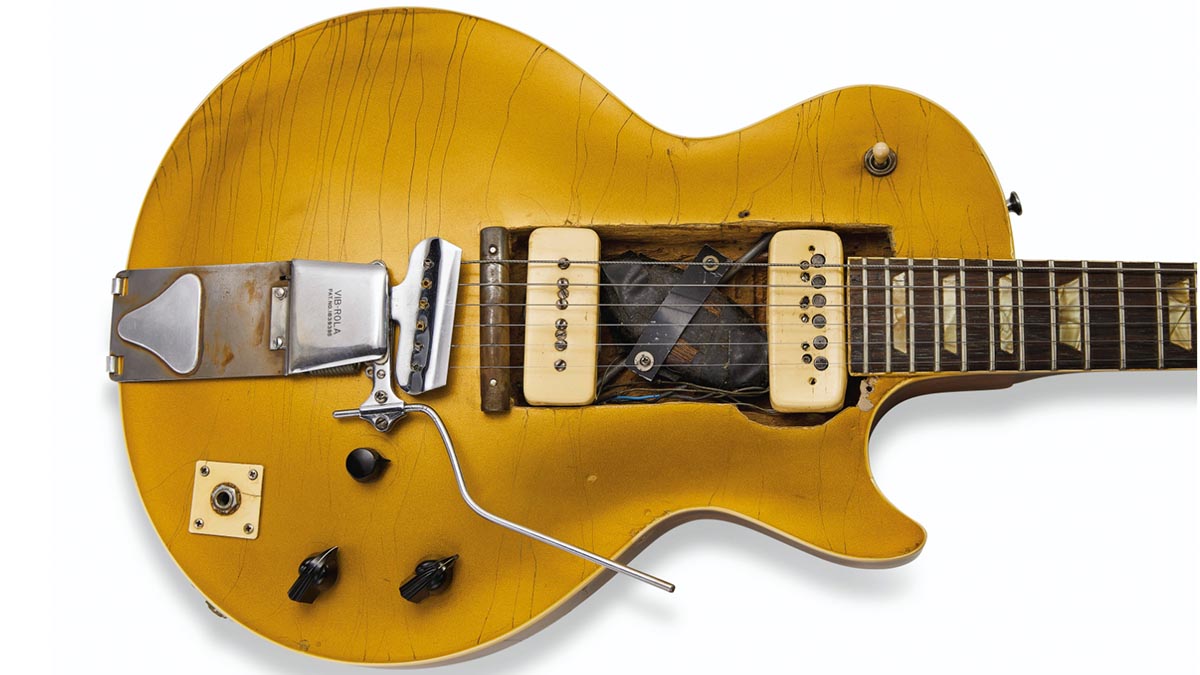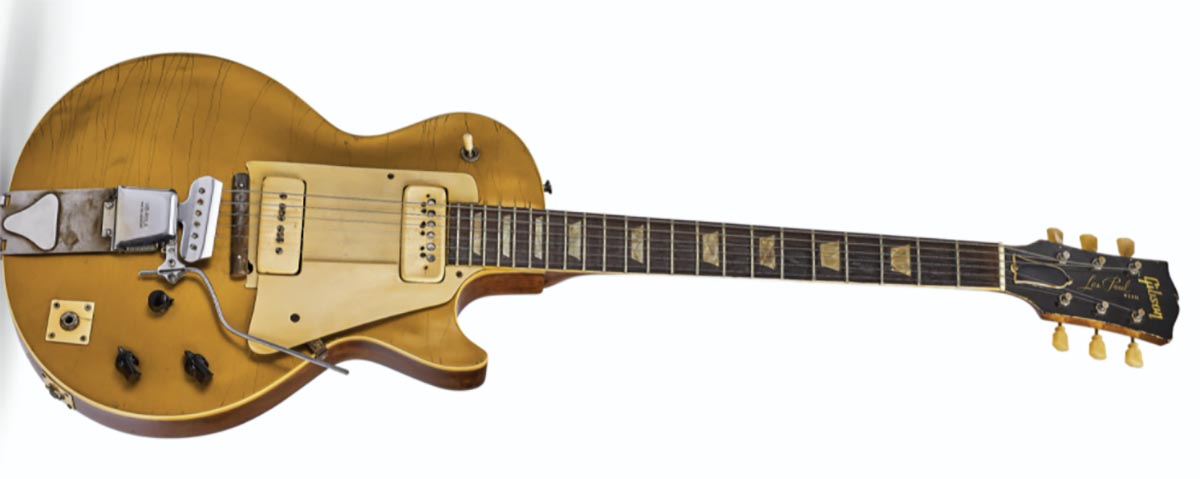Les Paul’s heavily modded ‘Number One’ Gibson Les Paul Goldtop fetches $930,000 at auction
The first Gibson Les Paul to be officially approved by the man whose name it bore is a design landmark for electric guitar

Smashing its estimated price of $150,000, Les Paul's ‘Number One’ Les Paul guitar has been sold at auction for $930,000 through Christie's in New York.
The Goldtop was the first of its kind to receive Paul’s approval, becoming his main performing guitar in the early ‘50s. A testing ground for electric guitar design, the ‘Number One’ Les Paul debuted a number of groundbreaking modifications.
The electric guitar pickups themselves Paul’s own wind; he took DeArmond magnets and wound them for lower impedance and the search for a singing, uncompressed sustain.
Speaking to Guitarist magazine, Les Paul's longtime friend and technical collaborator Tom Doyle explained the many modifications that had been performed on the mahogany-bodied singlecut over the years.
Some of the modifications where cosmetic, such as the enlarged pickguard, but that too arose out of the necessity to cover the extended ‘swimming pool’ routing underneath the pickups that allowed the pickup positions to be moved.
Phantom coils were also deployed in the routing and in the pickup selector switch cavity to kill hum without using a dual-coil design such as the PAF humbucker that Seth Lover would design just a few years later.



As Doyle explains, Les Paul was a fan of humbuckers but only under certain conditions.
Want all the hottest music and gear news, reviews, deals, features and more, direct to your inbox? Sign up here.
“He wanted clarity and sustain,” said Doyle. “Not the [compression-based] sustain that came later on with the Les Paul guitars, with amplifiers in overdrive – but resonant sustain… I think it’s a major misconception that Les did not like humbuckers. He was using [the noise-reducing principle behind humbucking pickups] since the late 40s.
“He just didn’t like humbuckers where the coils were side by side...he preferred humbuckers that were piggybacked [stacked], because it was clearer and there’d be no distortion. He also liked putting coils in different parts of the guitar – and using that method he could still get humbucking.”

Other mods included a Kauffman vibrola – which itself needed a custom plate so it could be fitted to the guitar – and over the course of the years, Doyle had refretted the guitar with larger frets.
Paul’s exacting specifications for impedance are also evident by the guitar’s two output sockets, with one mounted on the top of the body and the other more conventionally on its side, with the top-mounted socket reserved for high-impedance signals. He would later gift it to Doyle, who presented it to the auction house Christie’s with Paul’s son, Gene.
Jonathan Horsley has been writing about guitars and guitar culture since 2005, playing them since 1990, and regularly contributes to MusicRadar, Total Guitar and Guitar World. He uses Jazz III nylon picks, 10s during the week, 9s at the weekend, and shamefully still struggles with rhythm figure one of Van Halen’s Panama.
